Hygiene has always been considered an essential aspect of maintaining good health. The COVID-19 pandemic has brought this topic back to the forefront of our minds. However, hygiene is not just about avoiding germs and preventing infections; it’s also about nurturing good physical and mental health. This comprehensive blog post will explore various aspects of hygiene, including personal care, cleanliness at home and in public places, food safety, and its impact on mental health. We will cover all the essential practices for achieving optimal health so that you can take charge of your well-being.
Personal Hygiene: The Foundation of Good Health
Personal hygiene is the cornerstone of good health, encompassing a range of basic practices essential for keeping the body clean and fresh. Let's delve deeper into each aspect of personal hygiene:

Regular Bathing: Keeping Your Skin Clean and Fresh
Bathing is not just a cleansing ritual but is crucial in removing dirt, sweat, and impurities from the skin's surface. Regular bathing helps eliminate dead skin cells, preventing clogged pores and potential skin irritation or inflammation. By bathing or showering daily, individuals can maintain optimal hygiene, promote healthy skin, and reduce the risk of skin-related issues.

Dental Care: Maintaining a Healthy and Beautiful Smile
Dental hygiene is vital in preserving healthy teeth and gums. Proper dental care involves brushing teeth at least twice daily to remove plaque and prevent tooth decay. Additionally, daily flossing helps remove food particles and bacteria from between teeth and along the gum line. Regular dental check-ups are crucial for early detection of dental problems and professional cleaning to maintain oral health. Neglecting dental hygiene can result in tooth decay, gum disease, and other dental issues that may impact overall health.
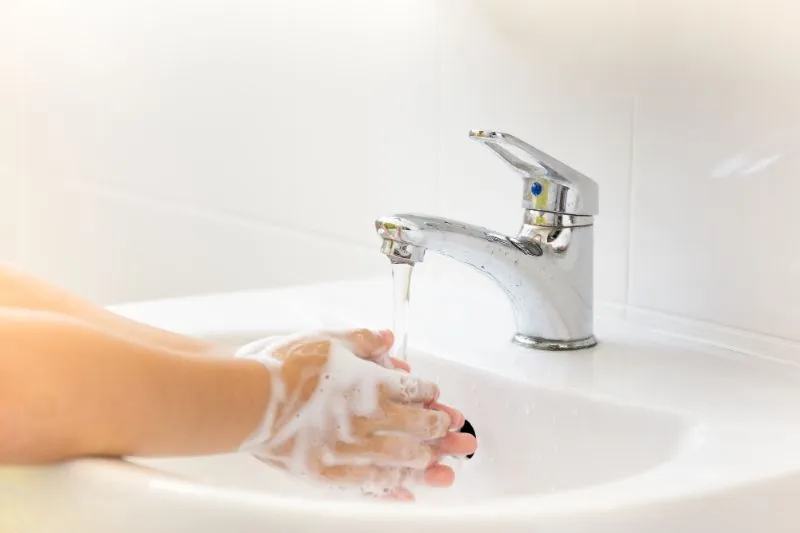
The Power of Handwashing: Defending Against Germs
Handwashing is a simple yet powerful practice to prevent the spread of germs and infections. Throughout the day, hands come into contact with various surfaces and objects, picking up bacteria and viruses. Washing hands with soap and water for at least 20 seconds removes harmful germs. It is essential to wash hands before and after eating, using the restroom, and being in contact with sick individuals. Proper handwashing is a cornerstone of infection control and a key component in reducing the transmission of illnesses.
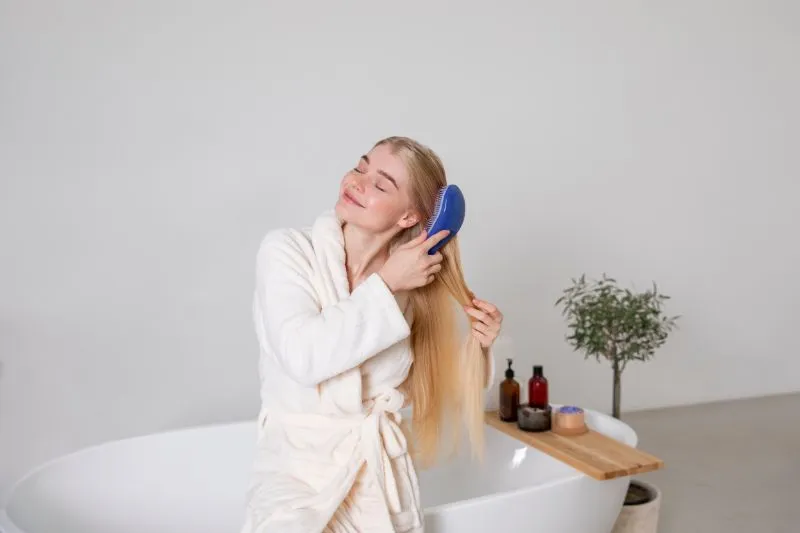
Hair Care: Nurturing Your Hair and Scalp
Hair care is not just about aesthetics; it also contributes to personal hygiene and the overall appearance of an individual. A healthy scalp is crucial for maintaining lustrous and strong hair. Regular washing helps eliminate excess oil, dirt, and dandruff from the scalp, preventing scalp-related issues. Conditioning the hair keeps it moisturized and manageable. Avoiding excessive use of hair products reduces product buildup and potential scalp irritation. Nurturing hair and scalp hygiene leads to healthier and more vibrant hair.
Ear and Nose Cleaning: Clearing the Pathways to Better Health
Cleaning the ears and nose is essential for removing excess wax and debris, preventing inflammation and potential infections. It's important to clean your ears gently, using a soft cloth or tissue, and avoid using cotton swabs, as they can push earwax deeper and cause harm. Consider using a neti pot or saline spray for nose cleaning to maintain clear nasal passages and promote better breathing.

Foot Care: The Importance of Healthy Feet
Foot hygiene plays a vital role in overall personal hygiene. Keeping your feet clean and dry prevents fungal and bacterial infections. Regularly washing the feet helps remove dirt and sweat, while proper nail clipping prevents ingrown toenails and related issues. Additionally, wearing clean, well-fitting shoes and socks can help maintain foot hygiene and prevent odor. Incorporating foot massages into your routine can promote better circulation and relaxation.
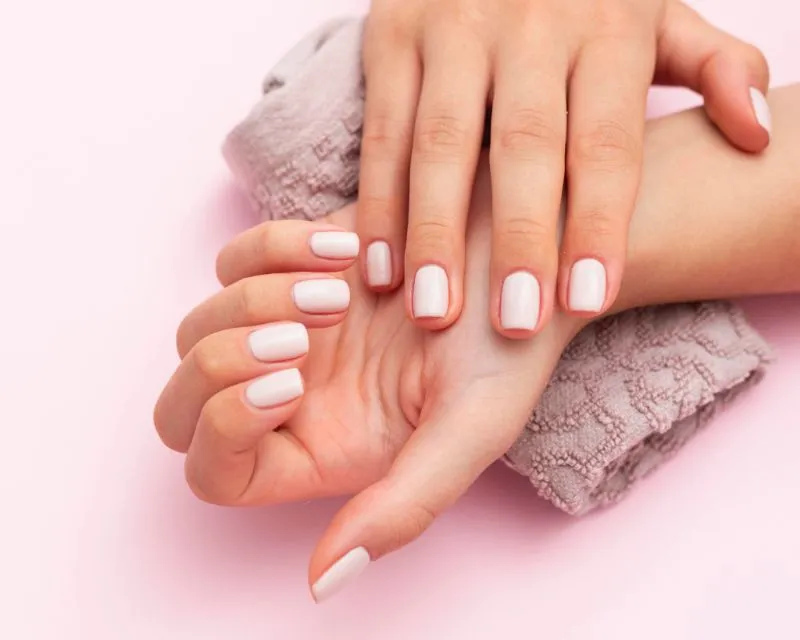
Nail Hygiene: Tips for Clean and Well-Groomed Nails
Nails can serve as a breeding ground for germs and bacteria. Keeping your nails clean and well-groomed can prevent infections and promote good hygiene. Regular manicures, whether done at home or by a professional, help maintain nail health and appearance. Proper clipping and filing of nails can prevent them from becoming a potential source of contamination.

Empowering Women's Health: Menstrual Health and Hygiene
It is crucial to address menstrual health as a vital aspect of women's well-being. Menstrual health and hygiene play a significant role in women's lives, affecting their physical and emotional health during menstruation. By practicing proper menstrual hygiene, women can prevent infections and discomfort. Using clean and hygienic menstrual products, such as sanitary pads or tampons, and changing them regularly is paramount. Furthermore, maintaining personal hygiene by washing hands before and after changing menstrual products and keeping the genital area clean can reduce the risk of infections. Emphasizing menstrual health education, breaking taboos, and providing access to menstrual products and information are essential steps towards promoting a supportive and hygienic environment for women.
By adhering to these fundamental personal hygiene practices, individuals can lay the groundwork for good health, promoting overall well-being and preventing the spread of illnesses. Personal hygiene is an ongoing and comprehensive commitment to self-care, ensuring a healthier and more hygienic life.

Personal Hygiene for Children: Instilling Healthy Habits Early On
Teaching children about hygiene habits from a young age lays the foundation for maintaining good practices throughout their lives. Here are some important hygiene practices that can be instilled in children early on:
a) Handwashing: Teach children the importance of handwashing with soap and water. Encourage them to wash their hands before meals, after using the restroom, and after playing outside. Emphasize the need for thorough handwashing to remove germs effectively.
b) Bathing: Encourage regular bathing or showering to keep their bodies clean and fresh. Make bath time enjoyable and stress the importance of maintaining personal hygiene.
c) Brushing Teeth: Teach children to brush their teeth at least twice a day, using fluoride toothpaste and proper brushing techniques. Emphasize the significance of oral hygiene in maintaining healthy teeth and gums.
d) Covering Mouth When Coughing or Sneezing: Teach children to cover their mouths and noses with a tissue or their elbow when coughing or sneezing. This practice helps prevent the spread of germs to others.
e) Avoiding Sharing Personal Items: Explain the concept of personal items and the importance of not sharing items like toothbrushes, towels, or eating utensils. This practice reduces the risk of transmitting germs between individuals.
f) Hygiene for Toileting: Teach children proper hygiene practices when using the restroom, including wiping correctly and washing hands thoroughly afterward.
By instilling these hygiene practices early on, children develop good habits that will benefit them throughout their lives. Reinforce the importance of these habits regularly and create a positive and supportive environment to encourage their adoption. As children grow and develop, these healthy hygiene habits become second nature, contributing to their overall health and well-being.

Hygiene at Home: Creating a Clean and Safe Environment
Maintaining hygiene at home is of utmost importance in preventing the spread of germs and viruses within the household. Living in a clean environment significantly impacts our health and well-being. A clean living space helps prevent the spread of bacteria and viruses, reducing the risk of infections and illnesses. Regular cleaning activities, such as dusting and vacuuming, are crucial in removing dust, dirt, and allergens from surfaces, which can contribute to respiratory issues and allergies. A clean home fosters a healthier and more hygienic living environment for everyone. In addition to regular cleaning, proper sanitization, and disinfection are essential in killing germs and viruses present in the home. High-touch surfaces, such as doorknobs, light switches, and countertops, are common areas where germs can linger. Paying particular attention to these surfaces and disinfecting them regularly can help prevent the transmission of illnesses. Using appropriate disinfectants according to manufacturer guidelines ensures their effectiveness in killing germs.
By adopting these hygiene practices at home, individuals can create a clean and safe living environment for themselves and their family members. A clean home reduces the risk of infections and contributes to a sense of comfort and well-being, fostering a healthier and more pleasant living space.

Food Safety and Hygiene: Ensuring Safe and Nutritious Meals
Practicing proper food safety and hygiene is paramount in safeguarding against foodborne illnesses and ensuring that meals are safe and nutritious. Here are some essential practices that can help achieve this:
a) Washing Fruits and Vegetables: Thoroughly wash fruits and vegetables under running water before consumption, as they may carry traces of soil, pesticides, or other contaminants.
b) Avoiding Cross-Contamination: Prevent cross-contamination by keeping raw meats separate from ready-to-eat foods during storage and preparation. Use different cutting boards and utensils for raw and cooked foods to prevent the spread of harmful bacteria.
c) Cooking Food Thoroughly: Cook food, especially meat, poultry, seafood, and eggs, to the appropriate internal temperature to ensure that harmful bacteria are destroyed. Using a food thermometer is a reliable way to check the doneness of cooked foods.
d) Storing Food at the Correct Temperature: Refrigerate perishable foods promptly and store them at the appropriate temperature to slow the growth of harmful bacteria. Follow recommended storage guidelines to prevent food spoilage and maintain food safety.
e) Proper Food Storage: Store different types of food separately in the refrigerator, freezer, or pantry to prevent cross-contamination. Raw meats, poultry, and seafood should be stored on the bottom shelf of the refrigerator to prevent any drips or leaks from contaminating other foods.
f) Safe Food Cooking and Reheating: Ensure that food is cooked to the proper temperature and that leftovers are reheated thoroughly to eliminate any harmful bacteria that may be present.
g) Hygienic Food Preparation: Wash hands thoroughly before handling food and after handling raw meats, eggs, or other potentially contaminated items. Use clean utensils, cutting boards, and surfaces during food preparation to avoid cross-contamination.
By diligently following these food safety and hygiene practices, individuals can significantly reduce the risk of foodborne illnesses and ensure that their meals are safe, nutritious, and enjoyable. Proper food safety measures contribute to the overall well-being of individuals and their families, promoting a healthier and more hygienic lifestyle.
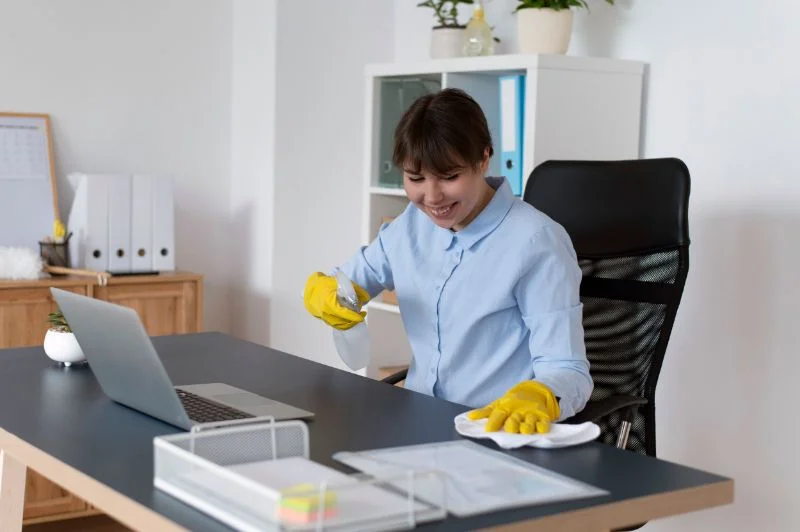
Hygiene at the Workplace: Promoting Employee Well-being
Maintaining hygiene at the workplace is essential for creating a safe and healthy environment for employees. By preventing the spread of germs and viruses, employers can promote employee well-being and productivity. Here are some important practices that can be followed at the workplace:
1. Proper Hand Hygiene: Encourage all employees to practice proper hand hygiene. This includes washing hands with soap and water regularly, especially before eating, after using the restroom, and after coughing or sneezing. If soap and water are not available, provide hand sanitizers throughout the workplace for easy access. Proper hand hygiene is a simple and effective way to reduce the transmission of germs among employees.
2. Keeping Workstations Clean and Disinfected: Regularly cleaning and disinfecting workstations, shared equipment, and frequently touched surfaces are crucial steps in maintaining workplace hygiene. Provide cleaning supplies, such as disinfectant wipes, for employees to clean their work areas before and after use. Pay special attention to high-touch surfaces like doorknobs, light switches, keyboards, and telephones. By keeping workstations clean and disinfected, employers can reduce the risk of cross-contamination and the spread of illnesses among employees.
3. Avoiding Close Contact with Sick Coworkers: Encourage employees to stay home when they are feeling unwell, especially if they have symptoms of a contagious illness. Similarly, if an employee becomes sick at work, they should be sent home to prevent the spread of germs to others. Implement flexible sick leave policies that support employees taking time off when needed without fear of repercussions. By promoting a culture of staying home when sick, employers can prevent the spread of illnesses within the workplace and safeguard the well-being of all employees.
Additionally, consider providing education and training on proper hygiene practices and the importance of maintaining a clean and healthy work environment. Foster a workplace culture that prioritizes employee health and well-being, encouraging open communication about hygiene concerns. By implementing these workplace hygiene practices, employers can create a healthier and safer work environment, leading to improved employee morale, reduced absenteeism, and increased overall productivity. Hygiene at the workplace is an investment in the health and well-being of both employees and the organization as a whole.
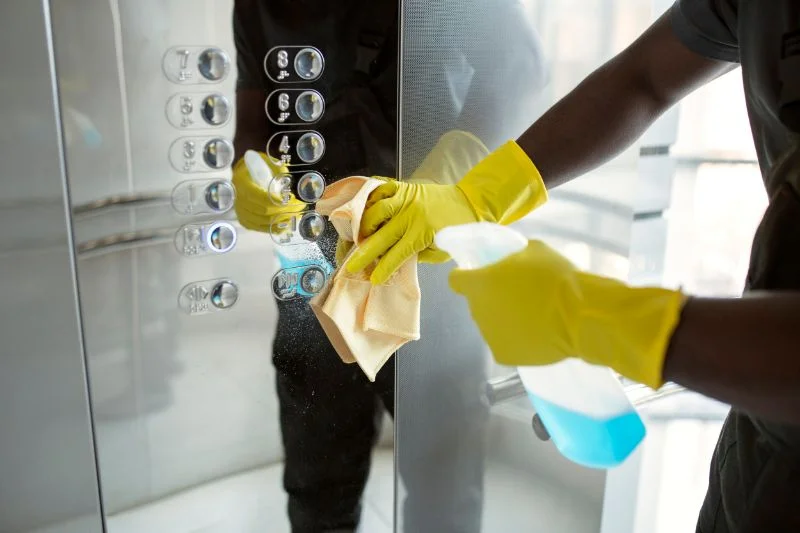
Public Hygiene: Navigating Cleanliness in Public Places
Maintaining hygiene in public places is crucial for safeguarding public health and preventing the spread of germs and diseases. While it can be challenging, there are effective practices that individuals can adopt to protect themselves and others:
1. Avoiding Direct Contact with High-Touch Surfaces: High-touch surfaces, such as door handles, elevator buttons, handrails, and public touchscreens, can harbor a significant number of germs. To minimize the risk of exposure to these germs, avoid direct contact whenever possible. Use your elbow, forearm, or a tissue to open doors or press elevator buttons. If you must touch these surfaces, try to wash your hands or use hand sanitizer afterward.
2. Using Hand Sanitizer When in Public: Hand sanitizer can serve as a convenient alternative to handwashing in public places. Carry a small bottle of hand sanitizer containing at least 60% alcohol, and use it when soap and water are not readily available. Apply a sufficient amount of sanitizer to cover all surfaces of your hands, and rub them together until dry. Hand sanitizers are effective in killing germs and can be particularly useful when touching high-contact surfaces in public settings.
3. Avoiding Crowded and Poorly Ventilated Areas: In crowded spaces, the risk of coming into contact with infected individuals and contaminated surfaces is higher. To minimize exposure to germs, try to avoid densely packed areas whenever possible. Opt for less crowded times to run errands or visit public places. Additionally, poorly ventilated areas can allow airborne particles to linger, increasing the risk of transmission. Choose open and well-ventilated spaces whenever you can.
4. Wearing a Mask: Wearing a mask is a key preventive measure during travel and commuting, especially in crowded or enclosed spaces. Masks help contain respiratory droplets, reducing the transmission of viruses to others. They also offer some protection to the wearer. Choose a well-fitting mask that covers your nose and mouth properly, and follow local guidelines on mask usage and disposal.
5. Keeping a Safe Distance from Others: Maintain a safe distance from others, especially in crowded settings, while traveling or commuting. Physical distancing reduces the risk of close contact with potentially infected individuals and decreases the chances of respiratory droplet transmission. Follow local guidelines and regulations regarding safe distancing practices.
Furthermore, practice good respiratory hygiene in public places by covering your mouth and nose with a tissue or your elbow when coughing or sneezing. Dispose of used tissues properly and avoid touching your face, especially your eyes, nose, and mouth, to reduce the risk of self-contamination. By following these public hygiene practices, individuals can play a vital role in reducing the spread of germs and diseases while travelling and commuting in public places. Being mindful of cleanliness and taking simple precautions can contribute to a safer and healthier environment for everyone.
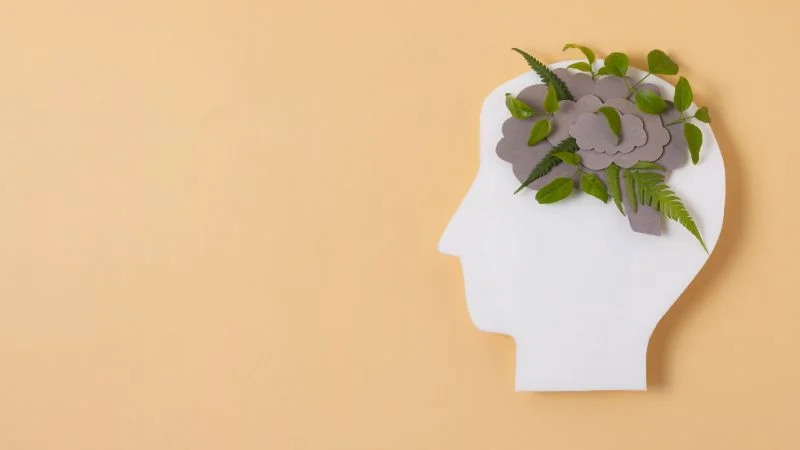
The Impact of Cleanliness on Mental Health and Well-being
Beyond its physical benefits, maintaining hygiene also has a profound impact on mental health and well-being. A clean and organized environment can contribute to reducing stress, anxiety, and depression. Living and working in a clean space can promote a sense of calmness and control, leading to improved mental clarity and focus. Personal hygiene practices, such as bathing regularly, brushing teeth, and grooming, can also positively affect self-esteem and confidence. Feeling clean and well-groomed can boost self-image and overall well-being.
In addition to physical hygiene, mental hygiene is equally important. Taking care of mental health involves stress management, seeking support from loved ones or mental health professionals when needed, and engaging in activities that promote relaxation and joy. By prioritizing both physical and mental hygiene, individuals can create a healthier and more balanced lifestyle, contributing to their overall well-being and happiness. A holistic approach to hygiene encompasses not only the prevention of physical illnesses but also the promotion of mental wellness.
Conclusion
In conclusion, maintaining essential hygiene practices is not only crucial for achieving optimal health but also plays a significant role in promoting a safe and hygienic community. Keeping work and home environments clean, sanitizing high-touch surfaces, and practicing proper food safety and hygiene are essential in preventing the spread of germs and viruses. Emphasizing hygiene practices to children from an early age instills good habits that contribute to their well-being throughout life. Moreover, comprehensive hygiene practices not only impact physical health but also have a profound effect on mental health and well-being. A clean and organized environment can reduce stress and anxiety. In this pursuit of hygiene and overall wellness, Cura4U serves as a reliable healthcare partner, offering access to certified healthcare professionals and doctor consultations. With the support of Cura4U's resources and guidance, individuals can confidently approach health challenges and take a proactive approach to healthcare. Prioritizing hygiene and being prepared with the knowledge and resources from Cura4U ensures the safety, well-being, and health of individuals and their families, ultimately contributing to a healthier and safer community.
Our clinical experts continually monitor the health and medical content posted on CURA4U, and we update our blogs and articles when new information becomes available. Last reviewed by Dr. Tayyab Saeed Akhter on August 4 th, 2023.
References
Personal Hygiene | CDC
Hygiene | UNICEF-https://www.unicef.org/wash/hygiene
Water, sanitation and hygiene (WASH) (who.int)- https://www.who.int/health-topics/water-sanitation-and-hygiene-wash
Assisting Patients With Personal Hygiene - StatPearls - NCBI Bookshelf (nih.gov)- https://www.ncbi.nlm.nih.gov/books/NBK563155/
Personal Hygiene (nationwidechildrens.org)- https://www.nationwidechildrens.org/family-resources-education/health-wellness-and-safety-resources/helping-hands/personal-hygiene
Personal Hygiene: Benefits, Creating a Routine, In Kids, and More (healthline.com)- https://www.healthline.com/health/personal-hygiene
GENERAL PRINCIPLES OF FOOD HYGIENE- fao.org/fao-who-codexalimentarius/sh-proxy/en/?lnk=1&url=https%253A%252F%252Fworkspace.fao.org%252Fsites%252Fcodex%252FStandards%252FCXC%2B1-1969%252FCXC_001e.pdf
Five keys to safer food manual (who.int)- https://www.who.int/publications-detail-redirect/9789241594639
Everyday Household Cleaning | CDC
Hygiene issues in the home - PubMed (nih.gov)- https://pubmed.ncbi.nlm.nih.gov/10586142/
Personal Hygiene in the Workplace - Safe at Work California- https://www.safeatworkca.com/safety-articles/personal-hygiene/
Hand Hygiene at Work | Handwashing | CDC
Employee Health and Personal Hygiene Handbook (fda.gov)- https://www.fda.gov/media/77065/download
Industrial Hygiene: Keeping Workers Healthy and Safe | Executive and Continuing Professional Education | Harvard T.H. Chan School of Public Health- https://www.hsph.harvard.edu/ecpe/industrial-hygiene-keeping-workers-healthy-and-safe/
Public Health: Hygiene: What and why? - PMC (nih.gov)- https://www.ncbi.nlm.nih.gov/pmc/articles/PMC1808522/
Public handwashing for basic hygiene in people experiencing homelessness - PMC (nih.gov) - https://www.ncbi.nlm.nih.gov/pmc/articles/PMC8580496/
Menstrual Hygiene | Water, Sanitation, and Environmentally Related Hygiene |

























